Understand the World
Anzac Day in muted dawn service at Gallipoli
Published
3 years agoon
By
lily
The dawn service held every April 25 is the culmination of events to remember fallen soldiers from Australia and New Zealand lost in a devastating battle during World War I in western Turkey. The occasion falls on what is now known as Anzac Day, which honors the memory of the two countries’ veterans and fallen soldiers. Traditionally, it is observed with large crowds, but for the past two years, the coronavirus pandemic has forced ceremonies to be scaled back.

/Australia and New Zealand commemorate war dead on Anzac day
In Turkey, where the battle that paved the way for the day to be marked was fought in, it was a muted affair. Around 50 people, including the official envoys of Australia and New Zealand and a handful of Turkish officials, attended the dawn service and a subsequent separate ceremony Sunday.
Anzac Cove, where the soldiers made their fateful landings 106 years ago in Gallipoli (Gelibolu) of the present-day province of Çanakkale, was eerily quiet except for the clacks and shutters of cameras and cellphones. Gone were thousands – sometimes hundreds – of visitors from New Zealand and Australia who used to sleep on the slope overlooking the cove as they awaited the dawn service every year.
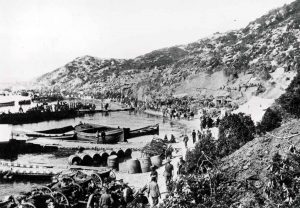
/Anzac day Gallipoli
A wreath-laying ceremony with limited participants instead of a larger dawn service was held. Australian Ambassador to Ankara Marc Innes-Brown and New Zealand Ambassador Wendy Hinton made short speeches before Lt. Col. Anıl Aksoy, who represented the Turkish Armed Forces (TSK) at the ceremony, read a letter sent by Mustafa Kemal Atatürk – a World War I commander in Çanakkale who went on to become the founding father of the Republic of Turkey – to families of Anzac soldiers killed in the Gallipoli campaign. A recitation of the anthems of Turkey, Australia and New Zealand wrapped up the ceremony, which was also attended by British Ambassador Dominick Chilcott, Irish Ambassador Sonya McGuinness and French Consul General in Istanbul Olivier Gauvin.
Anzac Day is revered as a celebration of the Anzac spirit, which helped Australia and New Zealand build a national identity, as the landings and sacrifice of the two countries’ soldiers were the first time when those members of the Commonwealth engaged in a war thousands of kilometers away from home.
You may like
Understand the World
China’s Overcapacity Hits the World Again
Published
1 min agoon
May 6, 2024By
lily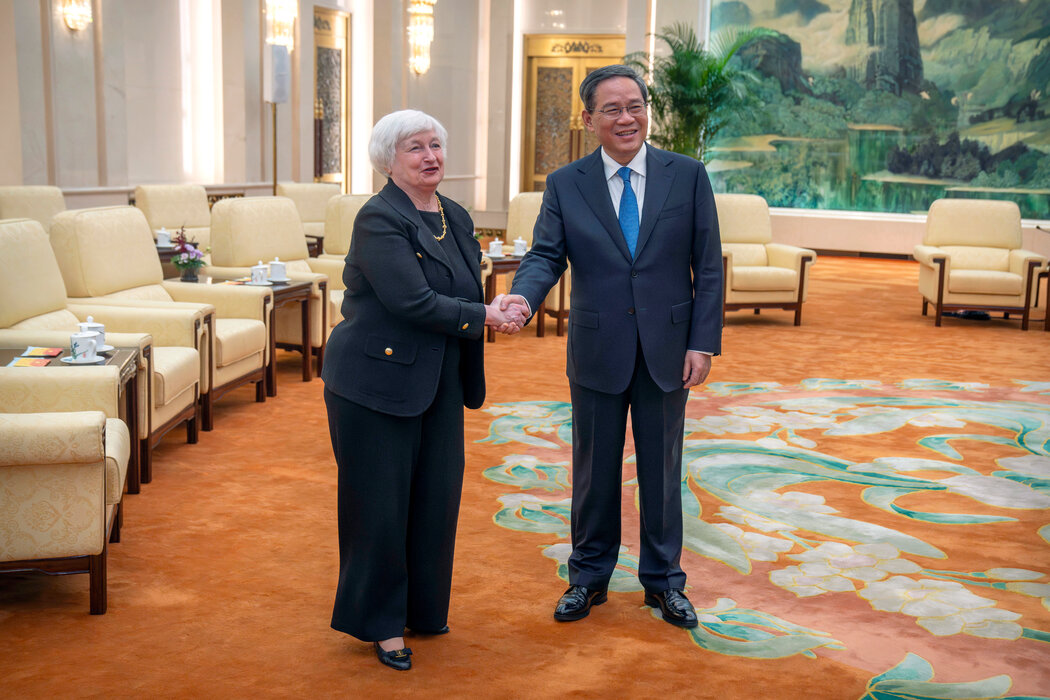
From April 4 to 9, U.S. Treasury Secretary Yellen visited China. This was her second visit to China since she took office, during which “China’s overcapacity” was once again in the spotlight. In an effort to turn around China’s sluggish economy in recent years, Beijing is selling cheap goods around the world, and Chinese companies are looking for overseas buyers for the vast amount of surplus goods, backed by cheap government-led loans. It’s a multi-trillion-dollar test that follows China’s impact on global manufacturing more than 20 years ago.

China in Transition
China’s economy is undergoing a painful transformation as Beijing tries to steer it out of the recession and real estate debt crisis that followed the Covid pandemic. Specifically, the Chinese government is promoting the so-called “new three” industries of solar panels, electric vehicles and lithium-ion batteries to aggressively produce and export these commodities in order to boost the economy. Overcapacity in photovoltaic products is the most prominent of China’s three new industries in foreign trade. By the end of 2023, China’s annual production capacity of finished solar components will be 861 gigawatts (GW), which is more than double the amount of components installed globally.
When these products are exported to Europe and the U.S., the survival of local companies will be in jeopardy, just as it was more than a decade ago, when Chinese steel swept the global market. Moreover, China’s economy is so large today that actions taken by Chinese entities could change international prices, potentially putting the survival of companies in the U.S. and other countries in question. Yellen emphasized that concerns about overcapacity are not motivated by anti-China sentiment or a desire to disengage, but rather by a desire to prevent global economic dislocation and to build a healthy economic relationship with China. At the same time, Yellen did not threaten to impose new tariffs on “overcapacity” industries. Only Beijing apparently sees things differently.
China’s Deputy Minister of Finance Liao Min responded to the U.S. skepticism by saying that “excess capacity” is a function of market mechanisms, that supply and demand are in relative balance, that imbalance is often the norm, that it can occur in any economy with a market economy, and that it is largely up to the market to make adjustments in accordance with the law of value. He also emphasized that the current production capacity is far from being able to meet the market demand, especially the huge potential demand for new energy products in many developing countries.
Undeniably, the production price of solar cells, electric vehicles and lithium-ion batteries produced in China is cheaper than those produced in Europe or the United States. The wages of skilled workers in China are still much lower than those in the West, and the society has not promoted the rights of workers, so the price of the same factory in the West is indeed higher than the price of similar products produced in China. Under the premise of globalization, it is a fact that Chinese products have an advantage. In the past, China produced low-end daily necessities, which were not important to the West, so the West was willing to absorb these straightforward goods. However, electric cars, solar panels and lithium batteries are items that Western societies have researched and developed but have not been able to produce in large quantities. I believe it is unlikely for Western countries to import from China at the expense of their own industries.
After all, trade is a matter of mutual consent. In the face of the impact on the long-term development of their own economies, it is inevitable that the West will revert to protectionism. In human history, this has often led to wars between nations. When Japan’s semiconductor and automobile industries surpassed the United States in the last century, the United States implemented a tariff policy that devastated Japan’s economy, and only then did it maintain its status as a major economic power today. In the face of China’s challenge today, it can be expected that the U.S. will still insist on various policies to suppress China’s development.
Anyone with a basic knowledge of economics will realize that if policies are focused on creating supply rather than demand, global spillovers will naturally occur. This phenomenon is related to the imbalance in the global trade structure caused by the epidemic and the pursuit of security in the supply chain, etc. The current situation is not optimistic, and the phenomenon is likely to continue for several years.
Unfair Economic Behavior
Beijing wants to replace the U.S. as the world’s technology center, and it has no problem competing with other countries in the relevant industries. But there are a variety of inequities in trade between the United States and China. For example, while the Chinese government can intervene heavily in markets, producers, and supply processes, locking U.S. companies out of the country, it demands that China have free access to the U.S. market, which has led to today’s situation. When Trump was in power, he set punitive tariffs on the trade deficit between China and the United States and required China to buy agricultural products from the United States, which were means of solving the trade gap between the two countries at the national level, but he still failed to face up to the market intervention and protection of domestic industries. However, the U.S. has been able to verify the Chinese business model, and it has been able to grasp the means by which the Chinese government has been able to influence the development of its enterprises. Today’s allegation that China is dumping money all over the world at the expense of other countries by spending US$300 billion on subsidies, restricting market access, and forcing technology transfers is a different story. In other words, it means to other countries that it is one company competing with one country. From the Great Leap Forward to China’s real estate boom, overcapacity is part of China’s broader governance style, which favors “overcapacity” and overshooting targets.
In the last 20 years of China’s reform and opening up, “excess capacity” has been and remains one of the weapons of China’s industrial strategy. From the “Made in China 2025” program, to the “One Belt, One Road” program, to the New Three Types of New Quality Productivity, some of these have been about finding international markets for China’s excess productivity, or even about attracting and stimulating the creation of a new industry from scratch by means of astronomical government subsidies from the outset, in order to capture a share of the international market as quickly as possible. Some of them are looking for international markets for China’s excess productivity, and even using government subsidies to stimulate the creation of a new industry from scratch. The imbalance between domestic supply and demand in China, coupled with the economic downturn in the real estate sector and other sectors, has also led to doubts about whether China is trying to get rid of its internal economic problems through exports.
China’s current flood of exports has already overwhelmed foreign competitors in some sectors; the difference this time is that the West has been prepared. The United States and the European Union have erected trade barriers, and emerging economies such as Brazil, India and Mexico have joined in the fight. For example, India has launched an anti-dumping investigation into Chinese-made bolts and screws, Argentina is investigating Chinese elevators, and the UK is investigating excavators and e-bikes.
In the face of this global backlash, China’s response has always been to denounce the rise of protectionism, suggesting that it has no intention of changing its strategy. It is not entirely wrong for China to say this, but China’s offense this time around is actually affecting the European countries as well, so the European countries will not sit idly by as China clashes with the US over trade. Although Yellen’s visit to China indicated that the US does not want to break ties with China, if Beijing stays on its current course, it is not impossible to rule out the possibility that the US and the rest of the world will move in a more protectionist direction.
Australia’s future opportunities
Australia’s economic structure is different from that of the West. Australia’s main economic exports are not industries, but raw materials, agricultural products and services. In fact, Australia’s industrial output is not large, so it is not an absolute competitor with China. On the contrary, Australia is a complementary economy to any industrialized country, especially one that does not have a large supply of raw materials.
However, China’s “overcapacity” is a wake-up call for the world economy, and given the volatility of the relationship between Australia and China in recent years, Australia has been “thinking of danger in times of peace”, and has been pushing for a diversification of its supply chain in order to minimize its dependence on the Chinese economy. Many countries have already begun to shift their supply chains away from China to other countries in East, Southeast or South Asia, and Australia is naturally adjusting its trade relations with other industrialized countries. Last month, for example, Australia-Vietnam relations were upgraded to a comprehensive strategic partnership, with new ministerial dialogues on priority areas, including energy and minerals, to diversify supply chains and reduce reliance on China. The two countries have also launched a new arrangement to allow 1,000 Vietnamese workers to fill labor shortages in Australia’s agricultural sector.
In addition, the so-called “overcapacity” in Chinese electric vehicles is benefiting a wide range of Australian customers. Australian Prime Minister Albanese has been actively promoting an emissions reduction program since taking office in 2022, creating a strong boost to EV demand. Sales of EVs have surged in Australia as foreign carmakers face no trade barriers and owners enjoy subsidies, tax breaks and relief from high fuel prices. That’s why BYD and other Chinese EV makers are making a big push into Australia, which is “friendlier” to them. According to data, BYD now has a 14 percent share of the Australian EV market, second only to Tesla, which has 53 percent. After all, Australia’s car market is heavily reliant on overseas markets, whether from China, Japan or India, it makes no difference to the people here.
In the short to medium term, accepting large quantities of low-cost Chinese goods will have temporary benefits for an Australian society dominated by agriculture and the service sector; but in the long term, to create a healthier economic and trade relationship, Australia will need to continue to expand its own supply chain, starting with a weakening of its economic dependence on China, especially in the face of the US and China’s struggle for economic hegemony, and a growing awareness of the need to expand its supply chain, especially in the face of the US and China’s struggle for economic hegemony. In a world where the US and China are competing for economic hegemony, and where there is a growing ideological war, each side is carefully testing the boundaries of the other while trying to expand its own space, Australia needs to think about its own way forward.
Once seen as the “weak link in the Western camp”, and with Beijing trying to wean Australia away from the US alliance, the West is slowly coming to its senses in the face of the unexpected new strain of influenza that is sweeping the world. Perhaps today’s world change is the perfect opportunity for Australia, which has long been caught between the US and China, to capitalize on its immigrant and multicultural strengths and take a different path to development.
Conclusion
Australia is in a different position from Western countries in terms of its small population and large amount of resources. Australia’s inability to efficiently produce cheap and good quality products in various industries has made it a country that relies on foreign imports for a long time. As China and the West struggle for dominance in industrial production, Australia is likely to be a beneficiary, obtaining cheaper products as everyone fights for the market.
However, after 20 to 30 years of over-reliance on China for tourism, education, export and investment, the Australian government has realized that it has to trade with different countries in a more comprehensive manner, and not to put all eggs in the same basket. Therefore, it is now time for Australia to establish a broader and more comprehensive cooperative relationship with the world economy. When the United States and European countries have to compete with China’s production capacity, Australia can have more choices.
Article/Editorial Department (Sameway Magazine)
Photo/Internet
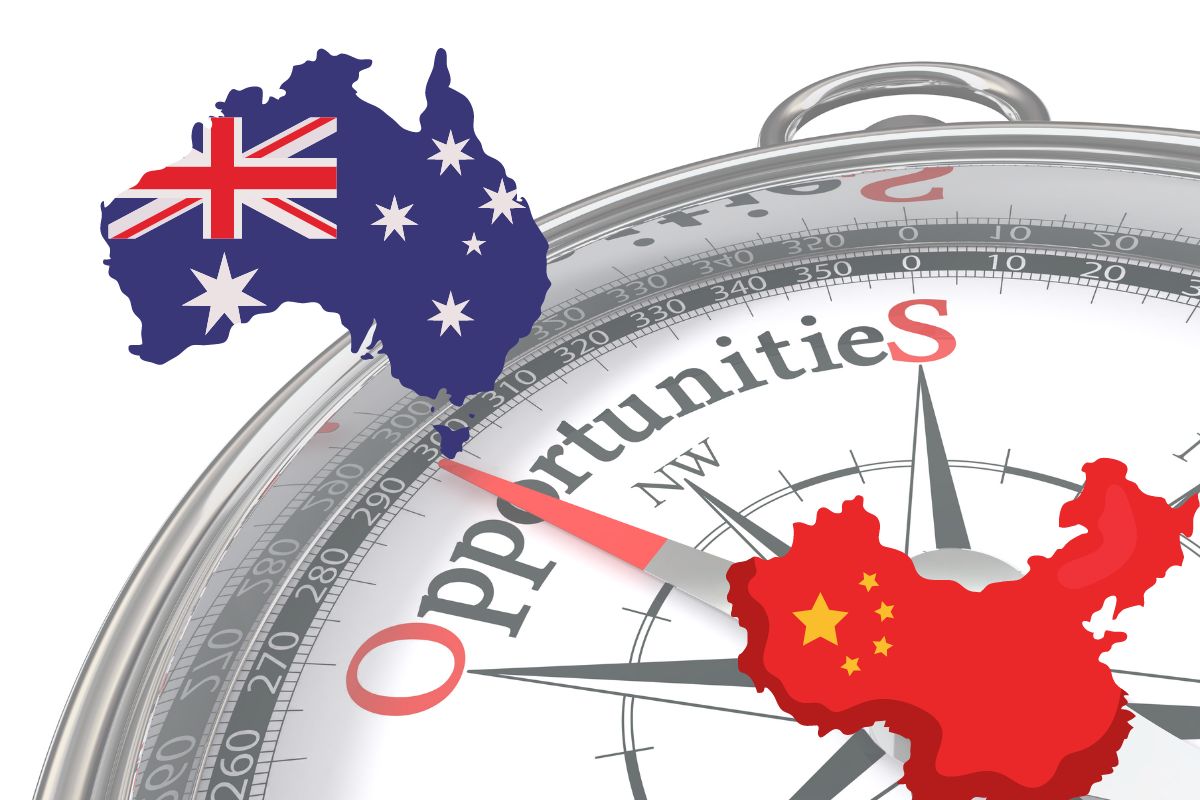
US Financial Secretary Yellen visited China last week did not bring any good news on their mutual agreement. She claimed that China has an over production in electric cars, batteries and solar boards that would overwhelm the global market thus impacting on the US and European industry. She said US and Europe would counteract with trade wars for their own protection. China disagreed on this and would keep up government support to such production enterprises in China. Yet from analysis there is still hope that the two nations would maintain their relationship rather than going onto a full-on conflict.
On Australia, China’s approach has been easing off recently. China lifted tariff on Australian red wine by end of March, their trading relationship would be fully restored impending the lifting of restrictions on the import of lobster and beef from Australia. But Australia has indicated to explore other exporting marketplaces rather than being restrained by her dependence on China’s. Actually with US’s high-tech export restriction on China, many factories have been evacuating from China to other SE Asian countries. Australia being a world major exporter of raw materials should seize this opportunity in a change of the world’s production chain for building our export market with wider scope and higher variety.
Australia has attracted many immigrants from a wide span and this facilitates trade relationships with a number of countries. Actually, the outcome of the US-China trade war would not affect on our export that much. But the political tension building up in the pan pacific region could affect our social stability and economic development.
Yellen’s visit to China is a sign of hope to Australia in terms of economic cooperation and stability in our region despite a tense political US-China relationship. Chinese counting on China-Australia trade should feel better now although a breakthrough development in the near future is not optimistic. With the cessation of entrepreneurs’ immigration category Australia is no longer after big investors from China. Australia is also planning to cut back influx of overseas students with a view to easing off our nationals’ stress of living due to rising population. So Chinese immigrants really need to integrate more into the mainstream society for gaining better opportunities.
Chinese community has been growing rapidly on its own economic circle thus deterring Chinese immigrants from mixing up with other ethnic communities. Now we Chinese must seize this opportunity to more understand the mainstream society and to build better relation with other social communities.
Mr. Raymond Chow, Publisher of Sameway Magazine
Understand the World
Spotlight on the Crisis of the British Crown
Published
11 mins agoon
May 6, 2024By
lily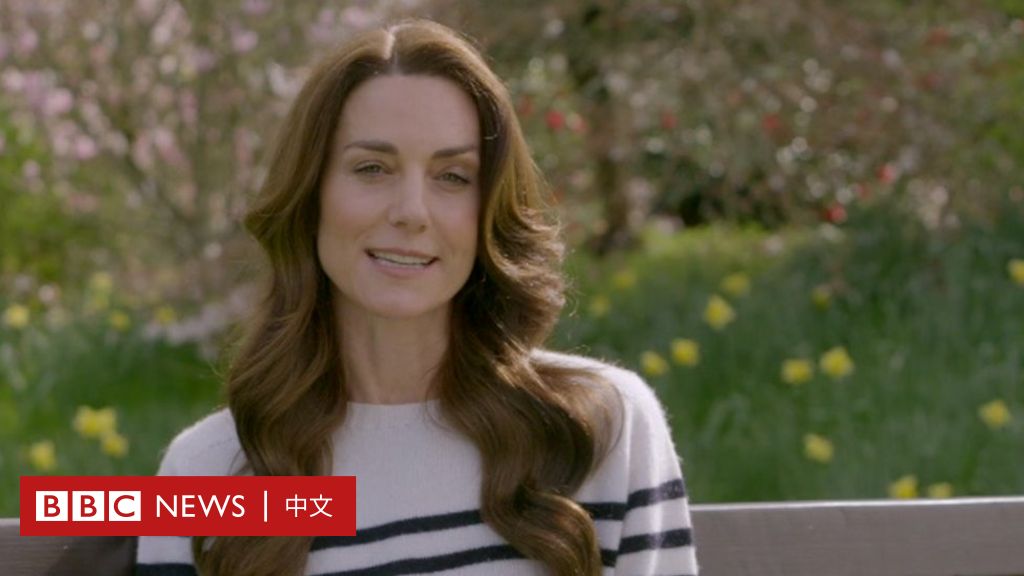
Last weekend, the news that dominated the world’s headlines was undoubtedly the release of a video statement by Britain’s Princess of Wales, Kate, admitting that she is in the early stages of treatment for cancer. Only a day before the statement, speculation and even rumors were flying about Princess Kate’s lack of public appearances since Christmas. In the face of the candid and haggard Princess, Britons suddenly had a “guilty conscience” and apologized to Kate. Some newspapers demanded an end to the rumors and harm done to Kate. Flowers were again piled up at Kate’s Prince’s Palace and in front of the Royal Courts of Justice, encouraging Kate to overcome her illness.
Where has Kate gone?
Until March 22, when the BBC first released a video of Princess Kate admitting she had cancer, “Where’s Kate?” had become a global topic, with trending searches for her whereabouts, news headlines, and even conspiracy theories.
Kate has not been seen in public since last Christmas. Until January 17th, the British royal family suddenly issued a statement that Princess Kate was hospitalized on January 16th to undergo a planned abdominal surgery, and said that she would not participate in any public activities before Easter (March 31st.) On January 29th, Kensington Palace again issued a statement saying that Princess Kate has returned home, and the progress is good.

Since the royal family did not tell the specific type of surgery, some netizens claimed that the private hospital where Kate had her surgery was famous for treating cancer, suggesting that Kate had an “incurable” disease. Since then, social media has been abuzz with talk of Kate’s long absence. Every day or two, a new conspiracy theory emerges to try to explain Kate’s “disappearance”: some say Kate is in critical condition and has a short life expectancy; others say she has passed away, and others say she has suffered a marital breakdown……. People have even begun to worry that Kate will repeat the tragedy of Princess Diana.
In the face of all the speculation and even malicious rumors, the British royal family has long practiced the principle of “silence is golden”. It wasn’t until March 10th, Mother’s Day, that Kate and William’s social media accounts posted the first official photo of Kate since Christmas in an attempt to dispel the rumors. In the photo, Kate is sitting in a chair surrounded by her children, all four of them smiling happily. William captioned the photo, “Thank you all for your wonderful wishes and support over the last two months, Happy Mother’s Day to you all.” However, the photo was taken down by a number of media outlets after it was pointed out that there were obvious signs of retouching in several of the details, and the story became more and more confusing.
The next day, the account apologized in Kate’s own words, saying, “Like many amateur photographers, I occasionally try to edit, and I want to apologize for any confusion caused by the family photo we shared yesterday. There was a public outcry. It’s been an eye-opening crisis of PR for the royal family. The only way to put the rumors to rest was for the right person to come forward, which led to last weekend’s video statement.
For a long time, the British royal public relations (PR) department has been trying to find a balance between “friendliness” and “mystery”. This year, the royal family has been under attack several times. First, King Charles suspended his public activities due to cancer, and then Princess Kate did not show up for a long time.Princess Kate’s appearance on camera will put an end to some of the speculation, but in the spotlight, the British royal family will have to face the new challenges of the information age.
The privacy of royals needs to be respected
The release of Princess Kate’s video statement gained a great deal of attention from people around the world. A spokesman for Kensington Palace later said in a statement that the Williams had received “very touching messages of goodwill” since Kate, Princess of Wales, was publicly diagnosed with cancer, and that they were “grateful for the public’s warmth, support and understanding of their fundamental need to respect privacy at this time”. This is partly a thank you for the public’s warm concern and response, and partly a “polite warning”. After all, the publicizing of the diagnosis is over.
The last few weeks have been extremely difficult for Mr. and Mrs. Williams, their children, and the teams around them, and despite attempts to dispel the rumors, it has proven to be an impossible task. The release of the video statement was a “no-brainer” that put an end to the secrecy surrounding Princess Kate’s diagnosis, including all the false rumors and allegations that had been made. What the royal couple probably wants more than anything else is to be alone, to spend better family time with their three young children, and not be subjected to the constant distractions of the outside world.
William’s three children, including 10-year-old Prince George, 8-year-old Princess Charlotte, 5-year-old Prince Louis school has begun on the 22nd Easter holiday, until April 17th will not return to school, William and his wife has already stated that will not participate in this year’s Easter ceremony. Kate’s choice to announce her condition on the day before her children’s Easter vacation after a three-month hiatus can be described as a “pity for the world’s parents”. This way, they can bring their three children home to a safer and more enclosed environment, where they will be exposed to as little outside interference as possible, and where they will be more emotionally and psychologically receptive.
But will the British media and public, who have always been critical of the royals, let a young family in a vulnerable situation off the hook so easily? The cancer announcement is just the beginning of what could be even greater pressure on Princess Kate to reveal more details about her condition, and cancer-related charities may jump on her to raise their profile. Discussing the disease in public may give some patients a sense of control and support, but for others it’s a very private matter, whether the patient is a member of the royal family or a member of the general public. Kate has sacrificed some of her privacy, and that request for “privacy” deserves to be honored.
British Prime Minister Rishi Sunak noted that Kate had “shown great courage” in her statement, adding that she had been “unfairly treated by some media and social media outlets around the world”. Princess Kate is a member of the royal family, but she is also a woman, a wife, a mother, a daughter, a living human being who needs the company and support of others at such a difficult time in her life – especially family members and loved ones, but not strangers and megaphones. Assuming that one day Princess Kate recovers, if she doesn’t want to talk to us or anyone else about what she’s been through, that’s her choice, and there’s no room for anyone else to tell her what to do.
The embarrassment of the royal family
In the age of social media, people have become so accustomed to uninhibited access to public figures that it’s only natural to unrealistically expect them to be completely self-disclosing. The general public is wildly skeptical of public figures’ need for privacy. When any public figure expresses a desire to stay out of the spotlight, people tend to make bad, even vicious, assumptions. In the case of the video statement, the conspiracy theories turned out to be about a woman with cancer. In the face of such a horrific disease, Kate is just another human being who has the right to deal with her illness on her own.
But Princess Kate’s cancer diagnosis does put the British royal family in an even more uncertain position. Charles, who succeeded to the throne in September 2022 after the death of his mother, Queen Elizabeth, underwent surgery to correct an enlarged prostate at the same hospital as Kate in January. Buckingham Palace subsequently revealed in February that the 75-year-old King would be undergoing treatment for cancer, meaning he would have to postpone his public royal duties. With the serious health problems of both the King and Kate adding to the already thinning monarchy, the pressure on Prince William is conceivably severe.
Democracy in Britain has been a gradual process, and the monarch has always existed. The constitutional monarchy was the most natural path for the British. As the power of the monarch gradually weakened, the monarch eventually became a symbol. Charles had no power, and although he was clothed in fine clothes and food, he was just a decoration. At the beginning of the centuries-long process of gradual democratization, the existence of a monarch was a reason for stability and obedience for a people who had been completely familiar and accustomed to monarchical power for millennia, and for the army and the people of the nation. Even if it is an “ornament”, it cannot be abolished at will. The existence of the royal family is not only a cultural preservation of history, but also a living fossil of political history, and since the existence of the king has not hindered the progress of democracy, there is no reason why it should be abolished.
During the crisis public relations campaign for Princess Kate’s disappearance, the British royal family’s stagnant silence has annoyed the social media-obsessed public. With conspiracy theories updated every few days, it was as if the public and the royal family were living in different generations – clearly, the royal family is having trouble keeping up with the ever-changing internet age. Social media is supposed to be a win-win for the royals, a means of getting their message out without question or tampering, except for the tampering of Kate’s photo, which has inevitably eroded the royal family’s credibility.
Even though most people may forgive and forget, trust is vital to the monarchy. Moreover, in a recent survey, 69% of Britons said they were worried about the difficulty of distinguishing truth from fiction on the Internet. This was before the swirl of rumors and misinformation about Katherine. And this incident will undoubtedly further exacerbate people’s skepticism about much of what they see in the news media and on social media. The biggest example of this was when the BBC published the video of Princess Kate’s cancer announcement, and immediately afterward there were voices on the internet questioning whether it had been synthesized by AI. People’s confidence in the information environment is waning.
The British royal family has been in turmoil since 1936, when Edward VIII “did not love the kingdom but the beauty”. Over the past 70 years, Elizabeth II has played the role of the “spiritual symbol” of the royal family with a high approval rate, bringing a relatively positive image of the British royal family, but her grandchildren have been involved in numerous scandals, and the internal affairs of the royal family have been frequently exposed to the world. After the death of the Queen, the British royal family has lost its backbone, and Princess Kate, who has always been well-liked by the public, is undoubtedly a new star of the British royal family – her cancer at this time seems to have pushed the reasonableness of the existence of the royal family system into a great unknown.
Australian Responses
To this day, Australia is theoretically a federal state under the Emperor of Australia, with each state and territory and the Commonwealth having a Governor appointed by Charles III. Princess Kate’s husband, Prince William, could have succeeded Charles III as head of the Australian states and commonwealths before Australia became a republic. However, today’s Australians, who come from more than a hundred countries around the world, and especially those who have immigrated from Asia in the last thirty years, do not see themselves as being connected to the royal family. Generally speaking, Australians are not as enthusiastic as the British about the privacy of the royal family.
At the end of the last century, when a referendum was held on whether to change the system of government and establish a republic, those who opposed the idea of maintaining a constitutional monarchy won by a small majority, thus temporarily silencing the calls for change. Occasionally, however, there were still demands. At the death of Queen Elizabeth II, it was thought that Charles III was too old and would probably make Australia a republic in the short term because of the disinterest in the crown and the low level of support among Australians.
This time, Princess Kate, as a woman suffering from cancer, told the public about her situation and demanded respect from the public, and gained the support of the community in Australia. The Australian society attaches importance to the rights of the disadvantaged groups in the society. The way Princess Kate handled the situation may be seen as a way to promote respect for women’s rights and concern for cancer patients in the society. If this happens, it may well slow down the demand for Australia to change its status to a republic. If it does, it may be an outcome that was not envisioned at the outset of the incident.
Article/Editorial Department (Sameway Magazine)
Photo/Internet
What to explore ?

China’s Overcapacity Hits the World Again

Seize the opportunity

Traditional Media Plays an Important Role

Spotlight on the Crisis of the British Crown

UN Releases 2024 Global Happiness Index Report

Fraudulent ivermectin studies open up new battleground

Cantonese Mango Sago

NEMBC Arabic COVID 19 News – 14 June 2022
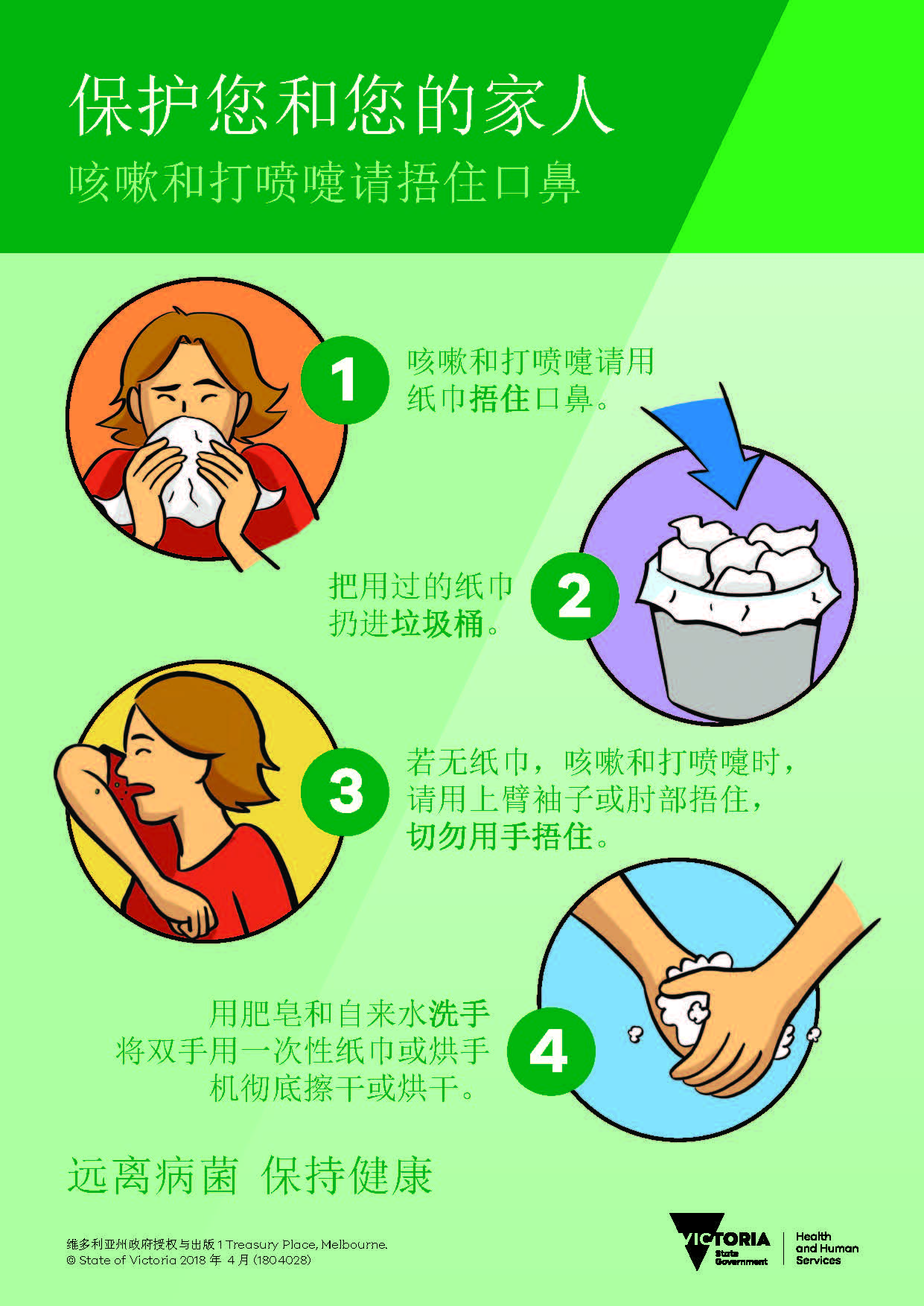
保护您自己和家人 – 咳嗽和打喷嚏时请捂住

FILIPINO: Kung nakakaranas ka ng mga sumusunod na sintomas, mangyaring subukan.
Trending
-

 COVID-19 Around the World3 years ago
COVID-19 Around the World3 years agoFraudulent ivermectin studies open up new battleground
-

 Cuisine Explorer4 years ago
Cuisine Explorer4 years agoCantonese Mango Sago
-

 Arabic2 years ago
Arabic2 years agoNEMBC Arabic COVID 19 News – 14 June 2022
-

 Cantonese - Traditional Chinese4 years ago
Cantonese - Traditional Chinese4 years ago保护您自己和家人 – 咳嗽和打喷嚏时请捂住
-

 Tagalog4 years ago
Tagalog4 years agoFILIPINO: Kung nakakaranas ka ng mga sumusunod na sintomas, mangyaring subukan.
-
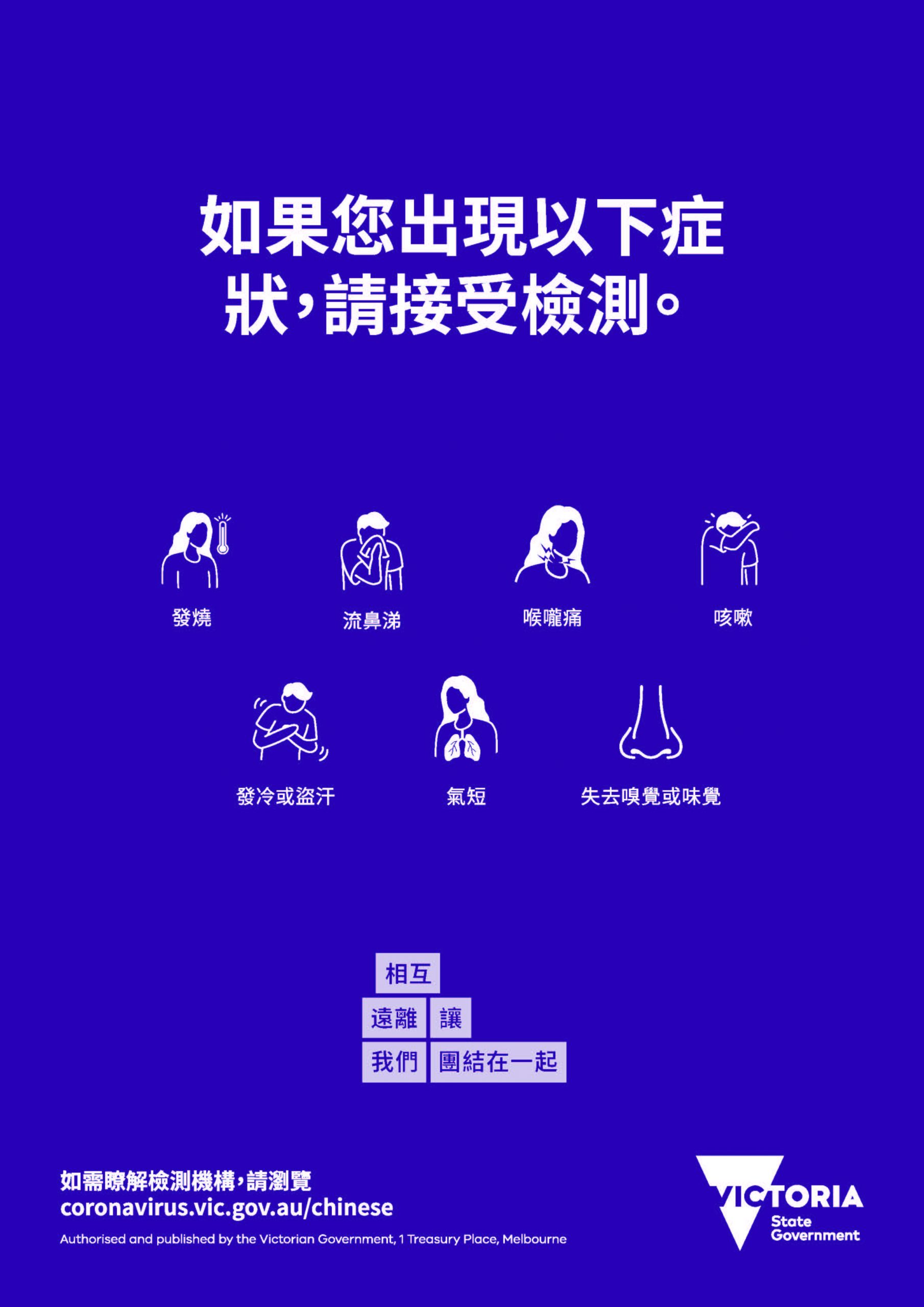
 Uncategorized4 years ago
Uncategorized4 years ago如果您出現以下症狀,請接受檢測。
-
Uncategorized4 years ago
在最近的 COVID-19 應對行動中, 維多利亞州並非孤單
-
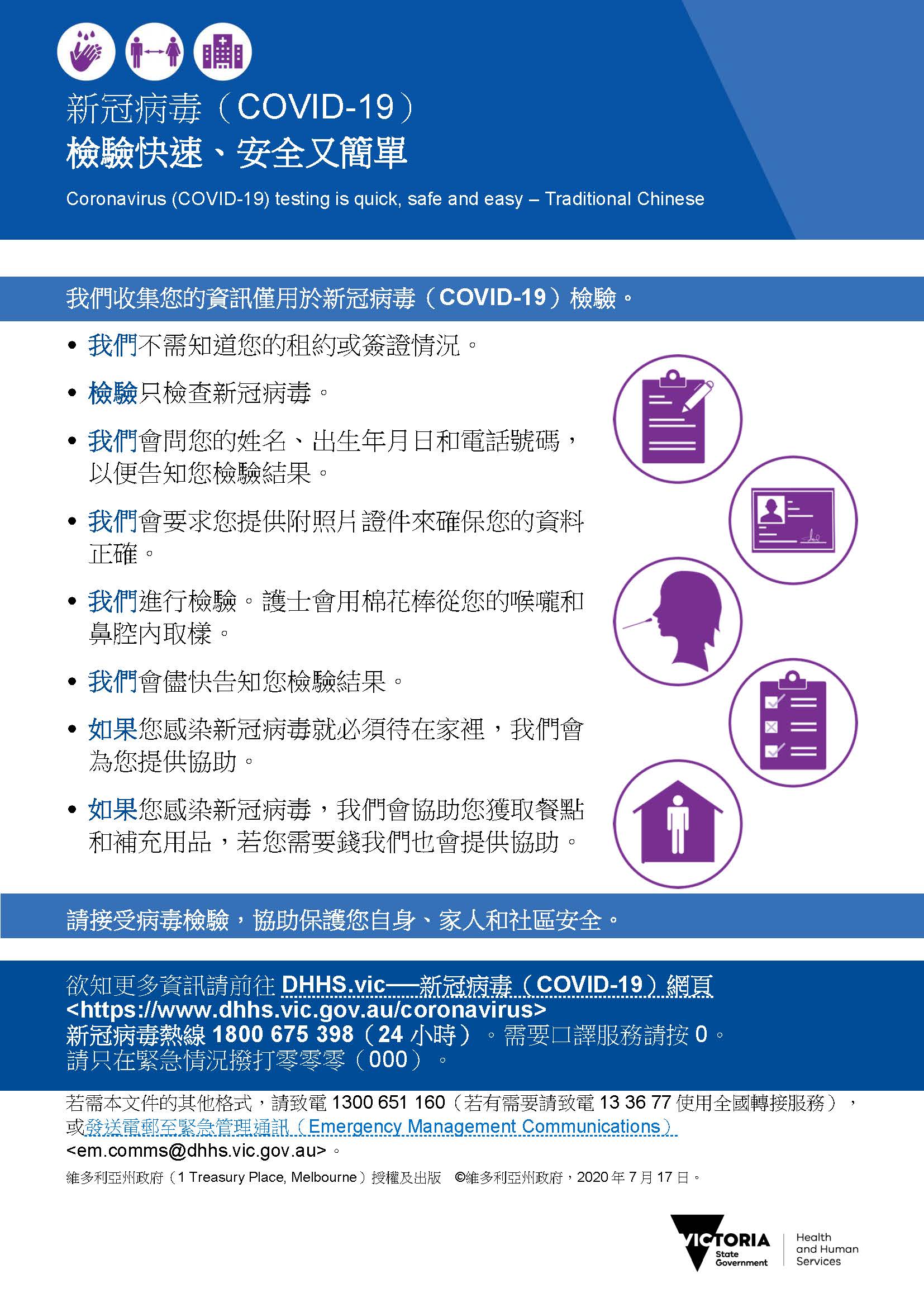
 Uncategorized4 years ago
Uncategorized4 years agoCOVID-19 檢驗快速 安全又簡單




